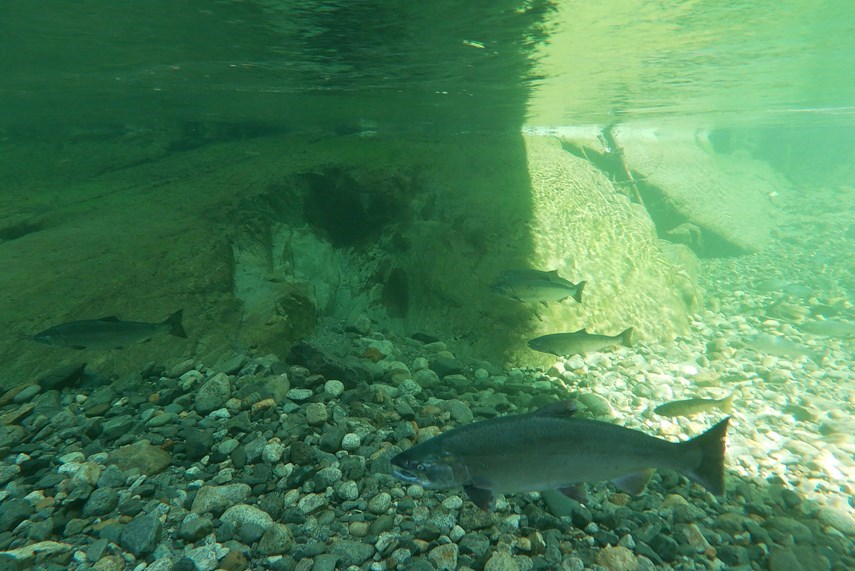The rain that’s bringing relief to the parched South Coast starting this weekend will also trigger a delayed start to the annual migration of spawning salmon on many streams.
Luckily, fish are surprisingly resilient, say local stream keepers and biologists who work with fisheries.
“There’s quite a bit of flexibility in terms of when they spawn,” said Chuck Parken, area chief of stock assessment for the Fraser and Interior area with the Department of Fisheries and Oceans.
“Coho salmon can delay their spawning activity, all the way into late January, early February,” he said.
In many cases, if the creeks are too dry, “they’ll just stay out in the ocean” and wait until the rains arrive, Parken said. In other cases, the fish will spawn lower in the river system.
But the prolonged drought has also stressed many salmon runs more than usual, said Shawn Hollingsworth, president of the Seymour Salmonid Society.
That’s something to keep in mind as the rivers start to fill with fish again, he said. “We should be mindful of allowing our dogs to go into the creeks,” for instance, he said.
Chinook salmon tend to spawn on larger river systems like the Capilano, Squamish, Harrison and Chilliwack, said Parken. On both the Capilano and Seymour rivers, DFO requires Metro Vancouver to release minimum amounts of water into the river from upstream dams during periods of drought. The salmon are already in the rivers, said Parkyn.
Hatcheries operate on both the Seymour and Capilano rivers. A fish ladder operates on the Capilano.
On the Seymour, volunteers with the Salmonid Society and Metro Vancouver have also been successful in reintroducing wild runs of coho and steelhead on the river. They also worked to reopen the river and create new channels for spawning salmon after a massive rock slide in 2014 nearly ended the river's viability as fish habitat.
This summer, volunteers have been capturing salmon in the mouth of the Seymour and at the estuary near Maplewood Flats with a beach seine and moving them upstream for spawning, said Hollingsworth.
Chum and coho tend to spawn in smaller creeks, where it’s been very dry, said Parken.
Those salmon will have been waiting at the mouths of the creeks for the rains to come, he said.
Surprisingly, the salmon can wait out the rains for several months.
In drier years, “they’ll spawn lower down in the river system,” as well. It some cases, salmon will even divert to a nearby creek if dry conditions persist through to late November.
Fortunately, November is just the beginning of the usual run for chum salmon, said Parken.
When rains raise the river levels, starting this week, “we’ll see a big number of fish,” he said.
Some other salmon runs are facing more of a challenge, however.
One sockeye salmon run on Weaver Creek in the Harrison-Agassiz area relies on a spawning channel and currently water levels there are very low. “Hopefully they get some rain up in that area,” said Parkyn.
Other runs – like the Adams sockeye run on the Fraser River – have also been delayed as salmon wait for temperatures to cool on spawning grounds in the river.
Juvenile salmon in smaller creeks can also be stressed by prolonged drought, said Parken, as the young salmon are likely hatching into less-than-optimal food conditions.
In many of the smaller streams especially, “it can become very difficult for them,” he said.



